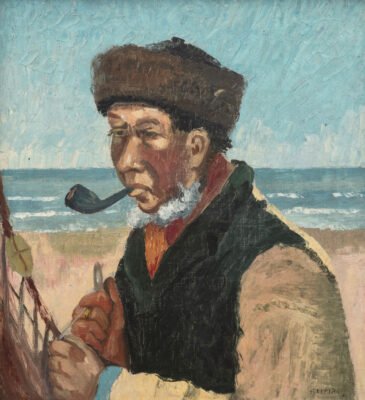
(Credits: Far Out / FBI / PICRYL)
Art is many things but isn’t often accused of being utilitarian. That is unless you count facial composites. Otherwise known as forensic sketch artistry, and if that doesn’t ring a bell, otherwise recognised by the stark, often semi-comical drawings of crime suspects you might have seen on the news.
In the modern age, it’s become an obsolete art, but in its heyday, police sketches were a vital tool in catching criminals. AI and computer-generated facial software might have become the quicker route, but the mental exercise of recalling what a criminal looked like often proved to be a useful exercise that revealed forgotten details of a crime.
When most witnesses are asked to recall how deep-set an attacker’s eye might have been, they instantly think it isn’t going to work. Rather than the shading or sense of proportion, the real art of police sketching is in coaxing details out of them. Apparently, it helps to ask victims to keep their eyes closed so they can hone in on the mental image of a person they might have seen for only a few seconds. Patience and continual revisions are required until it starts to resemble a unique face.
This laborious process isn’t designed to produce an image of one potential criminal. The idea is for the artist to create a face specific enough that it can eliminate 90 per cent of the general population and leave police officers to sift through the remaining ten. If they draw an older man with a beard, it effectively eliminates clean-shaven young men, a much-needed way to narrow down a search.
When you learn that, it makes sense why the drawings that appear on shows like Crimewatch are so objectively bad. While they’re not the most realistic, they are incredibly helpful. Lois Gibson is a Guinness World Record holder for it, and her drawings have solved over 1,000 crimes in her career. In her storied career, she’s found that children often notice facial details adults don’t. “They are the best,” she said. “They can spot a little thing on someone’s cheek that is only a millimetre wide.”
Working with children is one of the many delicate psychological elements involved with police sketch artistry. Other challenging elements of the job involve creating the faces of corpses that are so disfigured they cannot be identified. “A lot of cases stick with you,” agrees FBI-trained artist Detective McPhillips. “There are things you can’t un-see. You just have to think there’s a family member out there who wants to know where their loved one is.”
While the ubiquity of surveillance technology is often relied on, sometimes it’s only these artists capable of fleshing out a face well enough to lead to a conviction. While the skill is called upon less and less, sometimes the very thing that has replaced these artists is less useful. Their inherent understanding of the human side helps them guide witnesses and create portraits that are truer to life than any computer creations.






